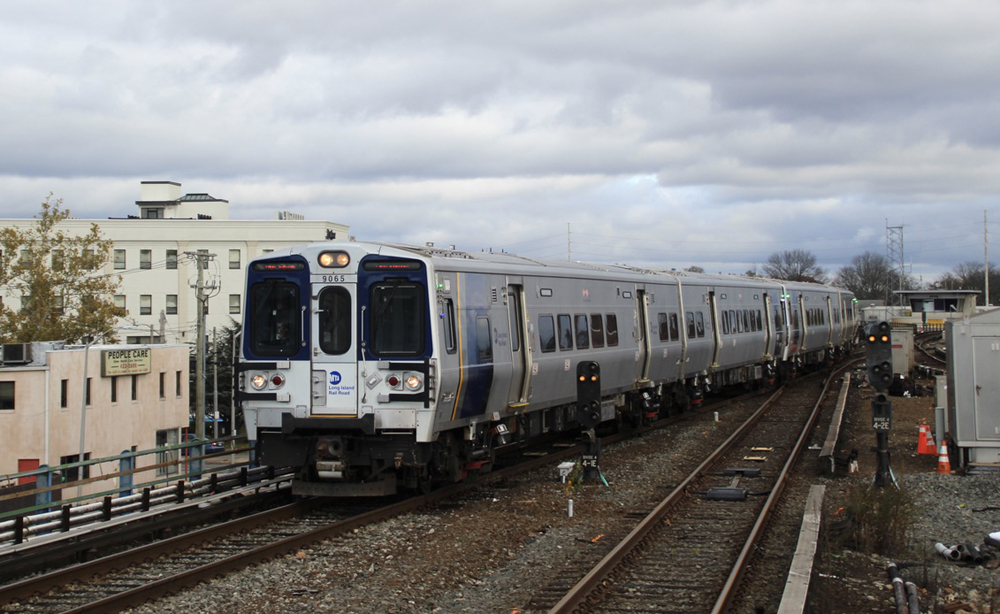
NEW YORK — The Metropolitan Transportation Authority, which had previously announced it was placing much of its capital spending on hold because of uncertainty over implementation of Manhattan’s congestion pricing plan, on Monday detailed the projects at risk while the lawsuits against congestion pricing are pending.
Congestion pricing, intended to discourage driving in Manhattan below 60th Street by charging a toll of $15 during the day and $3.75 at night, is the subject of at least four federal lawsuits to halt the practice, set to start later this year [see “New York MTA halts new contracts …,” Trains News Wire, Feb. 19, 2024]. Among arguments made by the suits is that the program discriminates against lower-income individuals, that it will increase traffic elsewhere in Manhattan, and that it will place an undue burden on New Jersey commuters.
The MTA says anticipated proceeds of $15 billion from congestion pricing bonds make up more than 50% of the funds in its capital program, and with those funds uncertain, the capital program must be placed on hold except for “limited, urgent exceptions.”
“Congestion pricing is foundational to the MTA Capital Program,” MTA Construction & Development President Jamie Torres-Springer said in a press release. “With the lawsuits challenging the program, critical projects to maintain and improve our transit system and more than 20,000 jobs are at risk of delay or disruption.”
Among the funding affected is $1 billion for new subway cars, new M9A electric multiple-unit cars for the Long Island Rail Road and Metro-North Railroad, and new LIRR locomotives, as well as signal modernization projects for the A-C line in Brooklyn and the B, D, F, and M lines in Manhattan. Those projects, now being delayed, calle for the installation of communications-based train control, as well as replacement of 70 switches and 17 interlockings dating to the 1930s. The press release also lists 18 subway stations where planned accessibility improvements will be delayed and six others where renewals are at risk, along with upgrades to public address systems at more than 70 stations.
Also affected at planned purchases of 250 electric buses and 11 depots to operate and maintain electric buses; future contracts for the extension of the Second Avenue Subway; state-of-good-repair work across the MTA; and Metro-North improvements on West of Hudson lines and electrification of the Hudson Line south of Croton-Harmon.
The agency released the map below showing projects it said will be supported by congestion pricing. A full-size version of that map is available here.
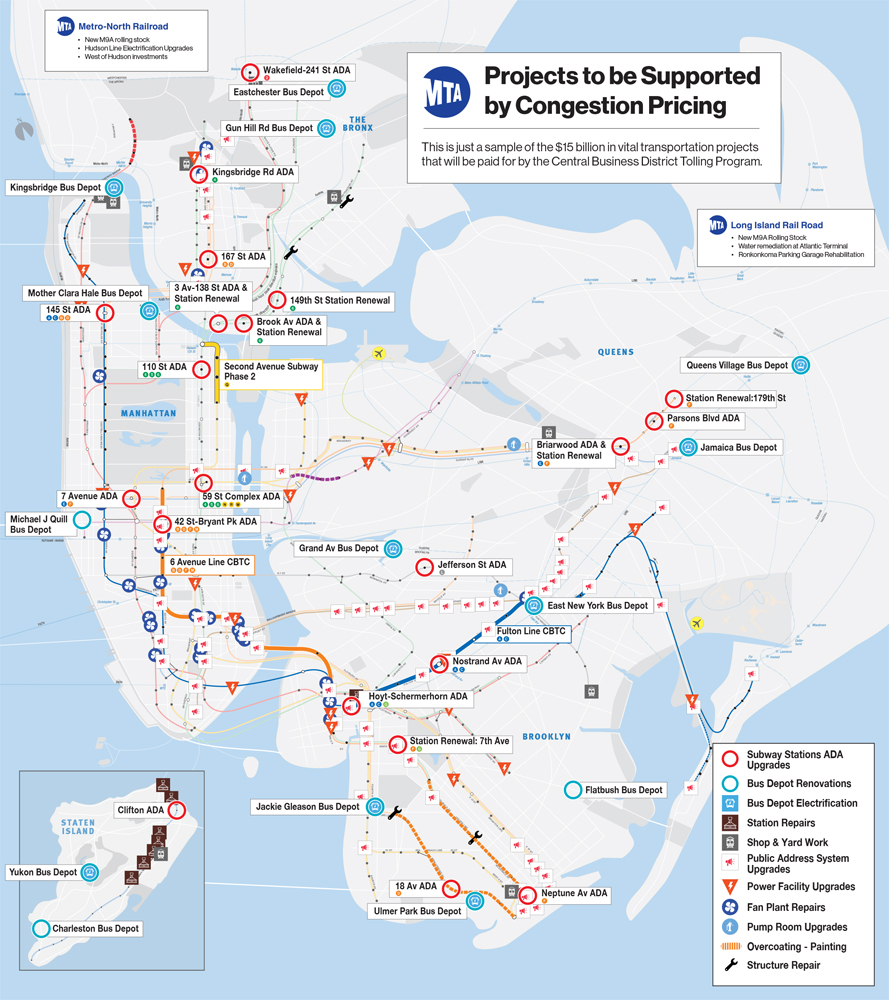






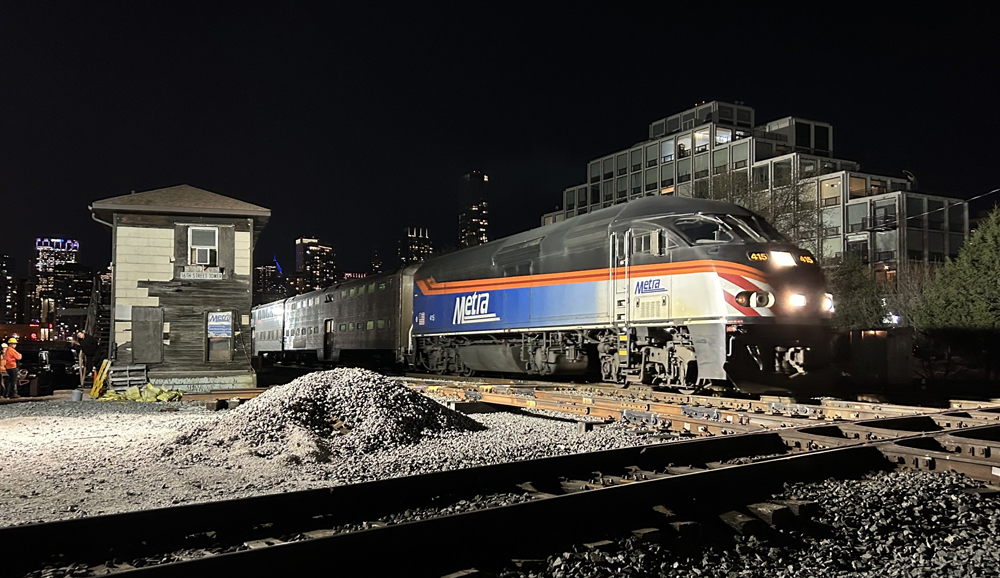
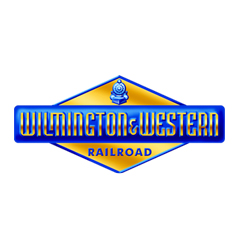
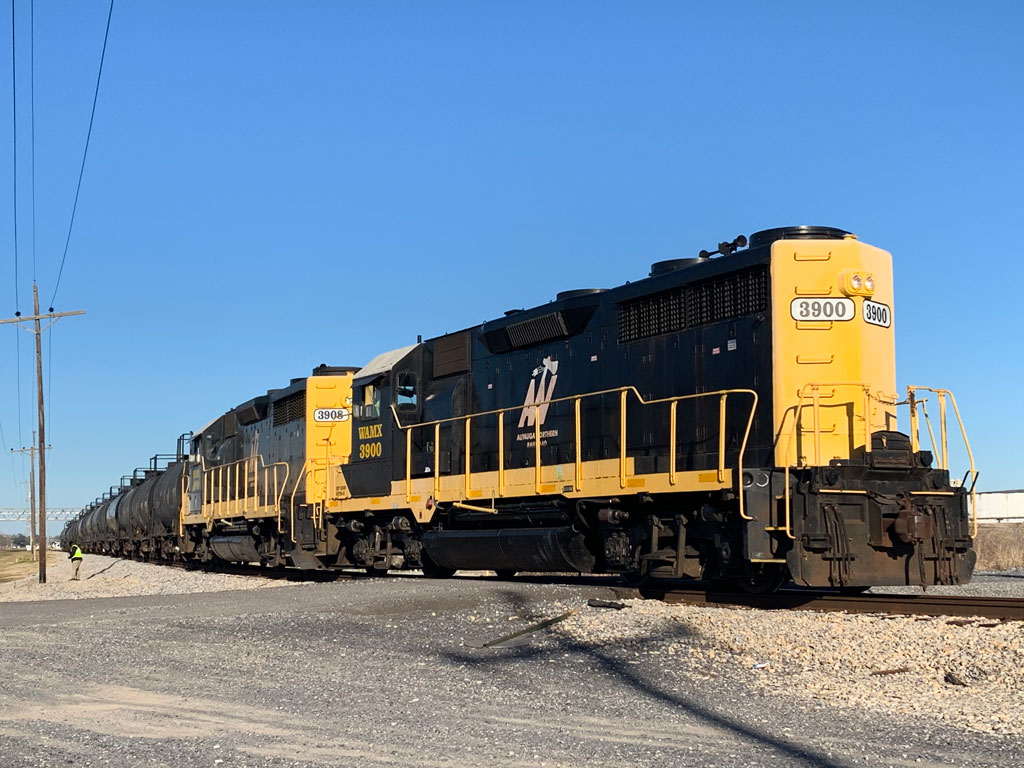





Perhaps the MTA is holding these funds hostage for leverage to ensure the courts let the new tax stand.
@ Charles. Had to laugh at your response to Gerald regarding th next snowstorm on the Thruway at Rochester. As a Rochesterian I can tell you we have had virtually no snow this year and even in the past 15 years when there have been massive snowstorms the closures have started/ended at the western of three exits for Rochester. Oh if you had only used Batavia– okay few have heard of that except NYCentral fans or Buffalo !!! 🙂
More seriously, EV school busses seem to be effective in cutting fuel bills and asthma attack rates– though do involve increased subsidies for initial purchase. Actual fuel savings even in cold climates seem to be ahead of modeling. Not sure I would call Chicago CREATE a public transit project– when probably more equally a private corp subsidy– which i know you HATE as well–, investment in community– (overpasses) and, passenger rail project. Finally our local roads are subsidized at the very least not to mention the billions put into the federal general highway fund for at least the last decade, so its about where we want to invest/subsidize.
What I haven’t seen is how they are going to collect these fees. Are they going to put toll barriers on all the southbound avenues? Or are they going to track everyones vehicle with some sort of tracking device? Sounds like an invasion of privacy to me.
(1) If the object of congestion pricing is to have fewer cars, then wouldn’t the policy’s success result in less revenue collected?
(2) As one of the program’s projects is electric buses along with the supporting infrastructure, I sincerely wish for the entire program’s failure. It seems that everyone except the greenies knows that EVs are an environmental disaster as well as economic ruin. Plus, as that very same state has already discovered with snowplows, they just plain can’t be relied upon.)
(3) BOTTOM LINE: We seem to have run out of sources to subsidize mass transit. Much as I’d like to see the more worthy projects implemented (Frederick Douglass Tunnels, Chicago CREATE, Penn Station access from Connecticut and Westchester, MBTA South Coast Commuter Rail, and others), the transit agencies have run out of magic to conjure increasing billions of dollars out of decreasing nothing.
Let’s face the cold, hard truth: residents of East Harlem and East Bronx who have waited sixty years for the Second Avenue Subway, have waited in vain. It ain’t gonna happen. Another cold, hard truth: the hundreds of transit stations that lack wheelchair access, aren’t ever going to see that funded. The need is there, good will and decency argue for it, there’s no money.
Leaving all your BS behind, the legality of congestion pricing is the only issue here…and that eventually will be determined as legal and that’s the only question here. As for some of your other comments, the only environmental problem with EV’s right now is that there’s no value inrecycling the battery packs(as currently manufactured), if someome would come up with a cost recycling program there goes the biggest environmental factor harming them.
For your point 3, this is not for mass transit subsidy, this is for mass transit CAPITAL EXPENDITURES. A subsidy is what is used to keep the system running, CAPEX is what is used to expand, improve, modernize and maintain the system. Two entirely separate equations of the money problem.
GERALD —– Any expense not covered out of the farebox is a subsidy. Be it capital or operating.
Oh BTW Gerald what in my post (above) is BS? Didn’t you read about New York State’s EV snowplow fiasco? About as surprising as the next snowstorm on the New York State Thruway at Rochester.
PAUL — Collection is just as easy as on the tollways. Require transponders in the cars or trucks or busses or taxis. Sensors on the bridges, tunnels or the traffic signal arms at 60th Street, Southbound. Cheaters pickup up by license plate scanners just as on the toll roads.
There no longer toll collectors on the turnpikes. It’s all done by the method as above.